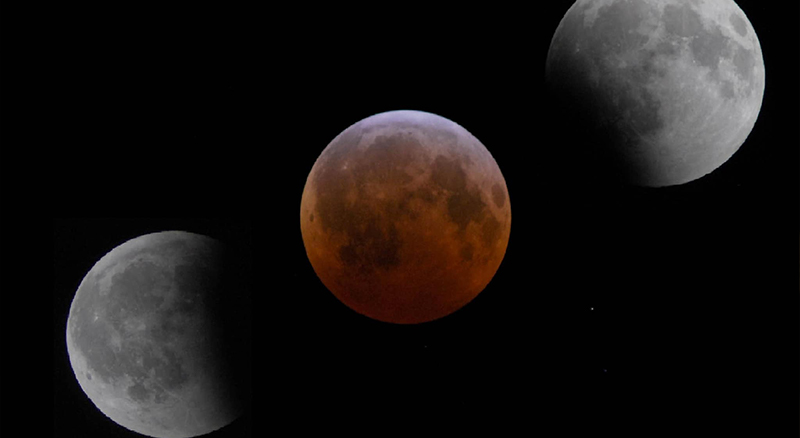Partial Lunar Eclipse
On 19 November 2021, a partial lunar eclipse occurred over the sky of Hong Kong in the evening. In fact, this partial lunar eclipse started at about 2pm HKT when the "Moon enters penumbra" of Earth, that is, the instant of first external tangency of the Moon with Earth’s penumbra. After that, "Moon enters umbra", that is the instant of first external tangency of the Moon with Earth’s umbra; then "the greatest eclipse" which is the moment when the centre of the Moon is the closest to the centre of Earth’s shadow. This was followed by "Moon leaves umbra", that is the instant of the last external tangency of the Moon with Earth’s umbra; and "Moon leaves penumbra" at 8:06pm, that is the instant of the last external tangency of the Moon with Earth’s penumbra. It also marks the end of this lunar eclipse. The whole process lasted over six hours, which was the longest partial lunar eclipse since the 15th century. However, the moonrise on that day was at 5:38pm and "the greatest eclipse" took place at 5:03pm. Therefore, on that day, the process of "Moon enters penumbra", "Moon enters umbra" and "the greatest eclipse" were not observable in Hong Kong. It was actually similar to the situation of total lunar eclipse in May this year where the eclipse observable was already in progress upon moonrise.
Why did this partial lunar eclipse last so long?
This is actually related to the distance between the Moon and Earth. We all know that the Moon’s orbit around Earth is elliptical, so the distance between the two is different at different times. When the Moon is the closest to Earth, the position is called "Perigee" and the full moon will be the largest in the year. When the Moon is furthest from Earth, the position is called "Apogee". "The greatest eclipse" this time occurred when the moon was quite close to the apogee and the distance between the Moon and Earth was relatively far and therefore, it took more time for the Moon to leave the shadow of Earth. This is why the partial lunar eclipse lasted longer.
The next time a lunar eclipse can be observed in Hong Kong will be on 8 November 2022 and it will be a total lunar eclipse. You can try to find out interesting information about the different time and duration of the lunar eclipse.
Geminid Meteor Shower
Besides lunar eclipse in November, a Geminid meteor shower will occur on 13-14 December this year and we may be able to observe it in Hong Kong. As we had mentioned in previous issue of the newsletter, a meteor is a phenomenon in which cosmic debris called meteoroids entering Earth’s atmosphere at extremely high speed. A meteor shower is a celestial event in which many meteors appear in night sky when Earth encounters a large number of meteoroids. This time the Zenithal Hourly Rate is projected to be about 150. However, the Moon phase on that night will be "First Quarter" and the observation may be more affected by moonlight. If you are interested in observing this phenomenon, you can choose a spot in the suburbs with an unobstructed view and low light pollution. You may be able to observe the meteor shower, if weather permits.
November 2021

